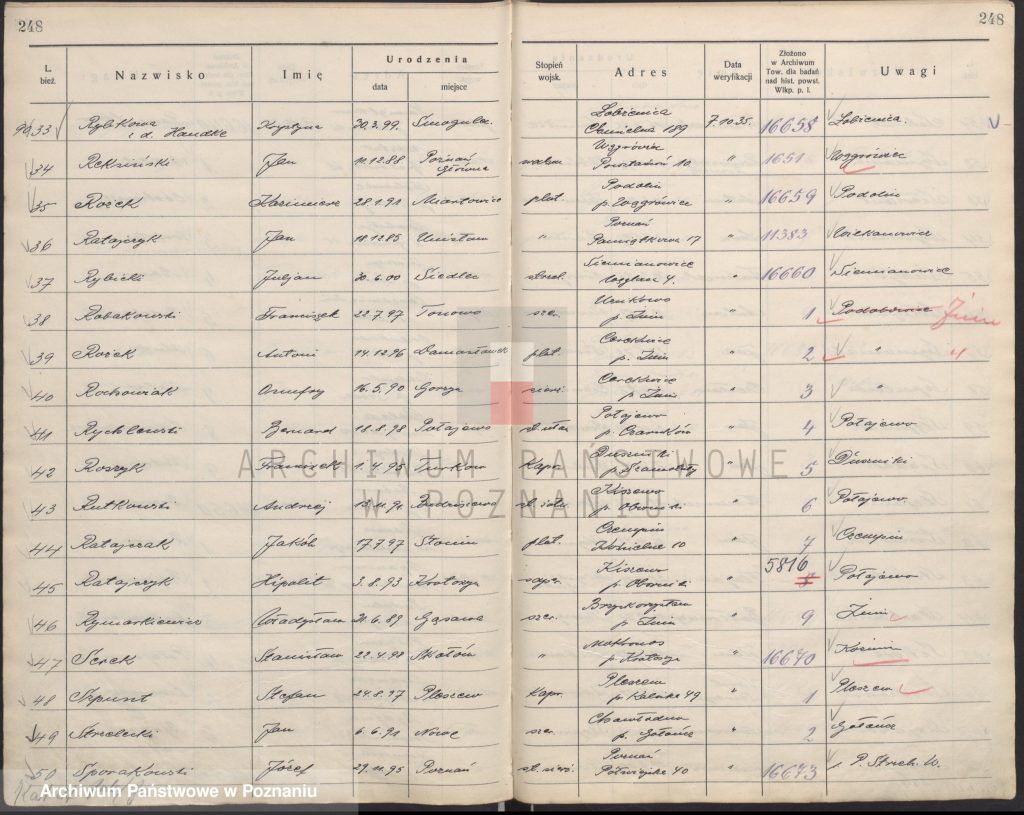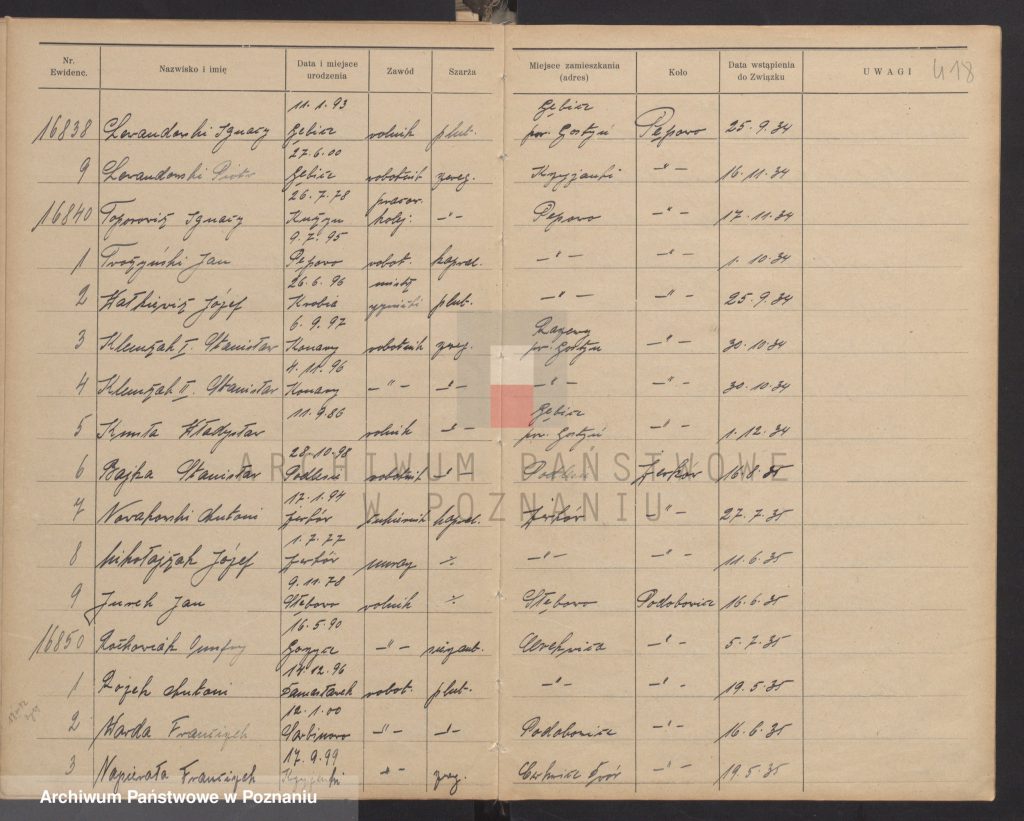Onfury Rochowiak: an Insurgent in the Greater Polish Uprising, 1918 – 1919
Onfury Rochowiak is a distant cousin to me, a third cousin once removed. My 3X great-grandfather, Alexi Rochowiak, was Onfury’s 2X great grandfather. While he wasn’t a resident of Toledo’s Polonia, he most certainly had a number of connections to Poles living in Toledo.
Onufry was born 16 May 1890 in Gorzyce, Kujawasko-Pomorskie, Poland. His parents were Franciszek Rochowiak and Marianna Domagała. Onfury was an insurgent who participated in Poland’s National Uprising in December 1918 through February 1919.
The Greater Polish Uprising is one of the most important events in Polish history. This uprising had a significant effect on the Treaty of Versailles, which defined the terms of the end of World War I and reunified Poland, removing its partitioning between Russia, Germany, and Austria. President Woodrow Wilson’s 14 points that outlined the ending to World War I included that Poland would be reunified and independent once again: “An independent Polish state should be erected which should include the territories inhabited by indisputably Polish populations, which should be assured a free and secure access to the sea, and whose political and economic independence and territorial integrity should be guaranteed by international covenant.”

Poles had been striving for reunification since the end of the 18th century, when the third partition of Poland occurred. Ignacy Paderewski, a world famous pianist and statesman had the ears and attention of a number of world leaders and influential men, including Wilson. Paderewski was a Polish patriot who used his influence to further the cause of an independent Poland, and he was in Poznań (Greater Poland, or Wielkopolskie) on Christmas 1918 and created quite the welcome at a banquet. The Germans, who still controlled Poznań viewed Paderewski as dangerous. So they then organized a parade and ordered a Prussian Grenadier Regiment to break into private homes, rip up and destroy Polish, French, and American flags Poles displayed in response to those who helped them achieve a negotiated reunification of Poland. As the day wore on, violence increased and shots were fired.
Something not necessarily mentioned in history books is that paramilitary organizations–private citizens taking actions and organizing similarly to a military–were fairly common in each of the Polish partitions. (Note there were a number of uprisings previous to the Greater Poland Uprising, most were unsuccessful, but uprisings occurred in 1794, 1830, 1861, and 1905. So this does give an idea of how great the Polish desire was to be an independent sovereign nation again.) By the time this insurrection occurred, it was estimated there were between eight to nine thousand volunteers ready to fight. Onufry was one of them. All they needed was the provocation by the Germans and to be fired up by a patriotic speech by Ignacy Paderewski.

Fighting began spontaneously and plans were ad hoc. There were deficiencies in command and tragic errors were made that ended with the death of some of the commanders. Within days, another group of commanders emerged, and although they were of lower military rank–junior officers and non-commissioned officers–they did well in the positions of senior officers. All during January of 1919, these “rag tag” forces were then subordinated and coordinated through a main command in Poznań and a creation of a regular army was started. The army liberated the whole of northeastern Poland, the areas of Szubin and Żnin. German transportlines into Bydogszcz were broken. By mid-January, insurgent Polish forces had about 15,000 volunteers.
By February, the heaviest fighting began to take place along the northern and western fronts and some towns had control changes several times. Germans attacked on the western front and managed to with Babimost and Kargowa. Then the Polish insurgents stopped the German offensive at Zbąszyń Lakes, despite the Germans having advantages in both troop numbers and equipment. In mid-February, talks began to extend the ceasefire that ended World War 1 on 11 November 1918. The Germans refused to extended this ceasefire for Greater Poland however France forced it through. On 16 February 1919, the extension of the Allied-German ceasefire is signed. It refers to Greater Poland and the Polish Army is referred to as Allied Forces. Greater Poland was in Polish hands.
On 28 June 1919, the Treaty of Versailles was signed. The Greater Polish Uprising victory shaped the Polish western border. The border held the territories that the insurgents dominated and Greater Poland was granted the areas of Bydgoszcz, Leszno, Rawicz and Zbąszyń.
Learning Onufry’s story placed my family into deeper historical perspective and more understanding of what they lived through and experienced. Onufry remained in the region my Rochowiak ancestors came from–Znin and Bydgodzcz. He lived through World War I in an area that had fought for Poland’s independence.